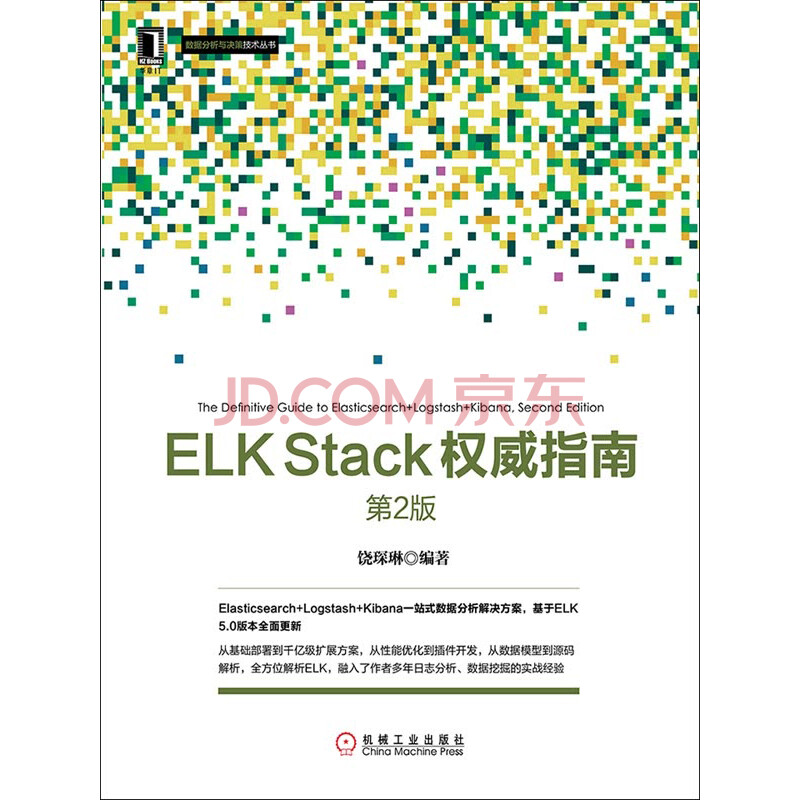比特币是最近相当火爆的一个金融衍生品(瞧咱这口径)。比特币中国提供了一系列 API 来获取和操纵其市场内的比特币。我的小伙伴们基于其 API,完成了一套交易程序。为了提高操作的有效性和技术性,同时作为 python 学习需要,我也参与进来,仿造股票交易软件,为比特币中国绘制了一系列指标图,包括 MACD、BOLL、KDJ 等。截止上周,btc123 也开始提供了 MACD 指标图,所以把自己的实现贴到博客。
首先是获取数据,比特币中国的 API 是个很鬼怪的东西,实时交易数据的接口,返回的数据中最高最低和成交量都是基于过去24小时的,要知道比特币交易是没有休市的啊。所以获取数据过程中需要自己计算这些。这里考虑到股市一般一天实际交易4小时,所以整个设计也是默认4小时的图形展示。
#!/usr/bin/env python3
# -*- coding: utf-8 -*-
# query price data from BTCChina.
from urllib import urlopen
from ast import literal_eval
import MySQLdb
import json
import yaml
import time
config = yaml.load(open('config.yaml'))
conn = MySQLdb.connect(host=config['database']['host'],user=config['database']['username'],passwd=config['database']['password'],db =config['database']['databasename'],charset=config['database']['encoding'] )
def write_db(datas):
try:
cur_write = conn.cursor()
sql = "insert into ticker(sell, buy, last, vol, high, low) values( %s, %s, %s,%s,%s,%s)"
cur_write.execute(sql,datas)
conn.commit()
cur_write.close()
except MySQLdb.Error,e:
print "Mysql error %d : %s." % (e.args[0], e.args[1])
def get_tid():
try:
vol_url = config['btcchina']['vol_url']
remote_file = urlopen(vol_url)
remote_data = remote_file.read()
remote_file.close()
remote_data = json.loads(str(remote_data))
return remote_data[-1]['tid']
except MySQLdb.Error,e:
print "Mysql error %d : %s." % (e.args[0], e.args[1])
def get_ohlc(num):
try:
read = conn.cursor()
hlvsql = "select max(last),min(last) from ticker where time between date_add(now(),interval -%s minute) and now()" % num
read.execute(hlvsql)
high, low = read.fetchone()
closesql = "select last from ticker where time between date_add(now(),interval -%s minute) and now() order by time desc limit 1" % num
read.execute(closesql)
close = read.fetchone()
opensql = "select last from ticker where time between date_add(now(),interval -%s minute) and now() order by time asc limit 1" % num
read.execute(opensql)
opend = read.fetchone()
return opend[0], high, low, close[0]
except MySQLdb.Error,e:
print "Mysql error %d : %s." % (e.args[0], e.args[1])
def write_ohlc(data):
try:
cur_write = conn.cursor()
ohlcsql = 'insert into ohlc(open, high, low, close, vol) values( %s, %s, %s, %s, %s)'
cur_write.execute(ohlcsql, data)
conn.commit()
cur_write.close()
except MySQLdb.Error,e:
print "Mysql error %d : %s." % (e.args[0], e.args[1])
except Exception as e:
print("执行Mysql写入数据时出错: %s" % e)
def instance():
try:
# returns something like {"high":738.88,"low":689.10,"buy":713.50,"sell":717.30,"last":717.41,"vol":4797.32000000}
remote_file = urlopen(config['btcchina']['ticker_url'])
remote_data = remote_file.read()
remote_file.close()
remote_data = json.loads(str(remote_data))['ticker']
# remote_data = {key:literal_eval(remote_data[key]) for key in remote_data}
except:
remote_data = []
datas = []
for key in remote_data:
datas.append(remote_data[key])
return datas
lastid = 0
ohlc_period = 60
next_ohlc = int(time.time()) / ohlc_period * ohlc_period
while True:
datas = instance()
if datas:
write_db(datas)
if(int(time.time()) > next_ohlc):
next_ohlc += ohlc_period
data = list(get_ohlc(1))
latestid = get_tid()
data.append(int(latestid) - int(lastid))
lastid = latestid
write_ohlc(data)
time.sleep(1)
这里主要把实时数据存入ticker表,分钟统计数据存入ohlc表。然后是各指标算法。首先是 MACD :
#/*******************************************************************************
# * Author: Chenlin Rao | Renren inc.
# * Email: rao.chenlin@gmail.com
# * Last modified: 2013-11-26 22:02
# * Filename: macd.py
# * Description:
# EMA(12)=LastEMA(12)* 11/13 + Close * 2/13
# EMA(26)=LastEMA(26)* 25/27 + Close * 2/27
#
# DIF=EMA(12)-EMA(26)
# DEA=LastDEA * 8/10 + DIF * 2/10
# MACD=(DIF-DEA) * 2
# * *****************************************************************************/
#!/usr/bin/env python
# -*- coding: utf-8 -*-
import time
import hashlib
import MySQLdb
import yaml
class MACD():
def __init__(self):
config = yaml.load(open('config.yml'))
self.sleep_time = config['btcchina']['trade_option']['sleep_time']
self.conn = MySQLdb.connect(host=config['database']['host'],user=config['database']['username'],passwd=config['database']['password'],db =config['database']['databasename'],charset=config['database']['encoding'] )
def _getclose(self, num):
read = self.conn.cursor()
sql = "select close,time from ohlc order by id desc limit %s" % num
count = read.execute(sql)
results = read.fetchall()
return results[::-1]
def _ema(self, s, n):
"""
returns an n period exponential moving average for
the time series s
s is a list ordered from oldest (index 0) to most
recent (index -1)
n is an integer
returns a numeric array of the exponential
moving average
"""
if len(s) <= n:
return "No enough item in %s" % s
ema = []
j = 1
#get n sma first and calculate the next n period ema
sma = sum(s[:n]) / n
multiplier = 2 / float(1 + n)
ema.append(sma)
#EMA(current) = ( (Price(current) - EMA(prev) ) x Multiplier) + EMA(prev)
ema.append(( (s[n] - sma) * multiplier) + sma)
#now calculate the rest of the values
for i in s[n+1:]:
tmp = ( (i - ema[j]) * multiplier) + ema[j]
j = j + 1
ema.append(tmp)
return ema
def getMACD(self, n):
array = self._getclose(n)
prices = map(lambda x: x[0], array)
t = map(lambda x: int(time.mktime(x[1].timetuple())) * 1000, array)
short_ema = self._ema(prices, 12)
long_ema = self._ema(prices, 26)
diff = map(lambda x: x[0]-x[1], zip(short_ema[::-1], long_ema[::-1]))
diff.reverse()
dea = self._ema(diff, 9)
bar = map(lambda x: 2*(x[0]-x[1]), zip(diff[::-1], dea[::-1]))
bar.reverse()
return zip(t[33:], diff[8:]), zip(t[33:], dea), zip(t[33:], bar)
然后是 BOLL :
#/*******************************************************************************
# * Author: Chenlin Rao | Renren inc.
# * Email: rao.chenlin@gmail.com
# * Last modified: 2013-11-26 22:02
# * Filename: macd.py
# * Description:
# MA=avg(close(20))
# MD=std(close(20))
#
# MB=MA(20)
# UP=MB + 2*MD
# DN=MB - 2*MD
# * *****************************************************************************/
#!/usr/bin/env python
# -*- coding: utf-8 -*-
import random
import hashlib
import MySQLdb
import yaml
import time
class BOLL():
def __init__(self):
config = yaml.load(open('config.yml'))
self.sleep_time = config['btcchina']['trade_option']['sleep_time']
self.conn = MySQLdb.connect(host=config['database']['host'],user=config['database']['username'],passwd=config['database']['password'],db =config['database']['databasename'],charset=config['database']['encoding'] )
def _getMA(self, array):
length = len(array)
return sum(array) / length
def _getMD(self, array):
length = len(array)
average = sum(array) / length
d = 0
for i in array: d += (i - average) ** 2
return (d/length) ** 0.5
def getOHLC(self, num):
read = self.conn.cursor()
sql = "select time,open,high,low,close,vol from ohlc order by id desc limit %s" % num
count = read.execute(sql)
results = read.fetchall()
return map(lambda x: [int(time.mktime(x[0].timetuple())) * 1000, x[1],x[2],x[3],x[4],x[5]], results[::-1])
def _getCur(self, fromtime):
curread = self.conn.cursor()
cursql = "select last,vol from ticker where time between date_add('%s', interval -0 minute) and now()" % time.strftime('%F %T', time.localtime(fromtime))
curread.execute(cursql)
curlist = map(lambda x: x[0], curread.fetchall())
vollist = map(lambda x: x[1], curread.fetchall())
if len(curlist) > 0:
return int(time.time())*1000, curlist[0], max(curlist), min(curlist), curlist[-1], sum(vollist)
else:
return None
def _getClose(self, matrix):
close = map(lambda x: x[4], matrix)
return close
def getBOLL(self, num, days):
matrix = self.getOHLC(num)
cur = self._getCur(matrix[-1][0]/1000)
if cur:
matrix.append(cur)
array = self._getClose(matrix)
up = []
mb = []
dn = []
x = days
while x < len(array):
curmb = self._getMA(array[x-days:x])
curmd = self._getMD(array[x-days:x])
mb.append( [ matrix[x][0], curmb ] )
up.append( [ matrix[x][0], curmb + 2 * curmd ] )
dn.append( [ matrix[x][0], curmb - 2 * curmd ] )
x += 1
return matrix[days:], up, mb, dn
最后是 KDJ :
#/*******************************************************************************
# * Author: Chenlin Rao | Renren inc.
# * Email: rao.chenlin@gmail.com
# * Last modified: 2013-11-26 22:02
# * Filename: macd.py
# * Description:
# RSV=(close-low(9))/(high(9)-low(9))*100
# K=SMA(RSV(3), 1)
# D=SMA(K(3), 1)
# J=3*K-2*D
# * *****************************************************************************/
#!/usr/bin/env python
# -*- coding: utf-8 -*-
import hashlib
import MySQLdb
import yaml
import time
class KDJ():
def __init__(self):
config = yaml.load(open('config.yml'))
self.sleep_time = config['btcchina']['trade_option']['sleep_time']
self.conn = MySQLdb.connect(host=config['database']['host'],user=config['database']['username'],passwd=config['database']['password'],db =config['database']['databasename'],charset=config['database']['encoding'] )
def _getHLC(self, num):
read = self.conn.cursor()
sql = "select high,low,close,time from ohlc order by id desc limit %s" % num
count = read.execute(sql)
results = read.fetchall()
return results[::-1]
def _avg(self, a):
length = len(a)
return sum(a) / length
def _getMA(self, values, window):
array = []
x = window
while x < len(values):
curmb = self._avg(values[x-window:x])
array.append( curmb )
x += 1
return array
def _getRSV(self, arrays):
rsv = []
times = []
x = 9
while x < len(arrays):
high = max(map(lambda x: x[0], arrays[x-9:x]))
low = min(map(lambda x: x[1], arrays[x-9:x]))
close = arrays[x-1][2]
rsv.append( (close-low)/(high-low)*100 )
t = int(time.mktime(arrays[x-1][3].timetuple())) * 1000
times.append(t)
x += 1
return times, rsv
def getKDJ(self, num):
hlc = self._getHLC(num)
t, rsv = self._getRSV(hlc)
k = self._getMA(rsv,3)
d = self._getMA(k,3)
j = map(lambda x: 3*x[0]-2*x[1], zip(k[3:], d))
return zip(t[2:], k), zip(t[5:], d), zip(t[5:], j)
最后通过一个简单的python web框架完成界面展示,这个叫 bottle.py 的框架是个单文件,相当方便。
#!/usr/bin/python
import json
import yaml
from macd import MACD
from boll import BOLL
from kdj import KDJ
from bottle import route, run, static_file, redirect, template
config = yaml.load(open('config.yml'))
color = {
'cn':{'up':'#ff0000','dn':'#00ff00'},
'us':{'dn':'#ff0000','up':'#00ff00'},
}
@route('/')
def index():
redirect('/mkb/240')
@route('/mkb/<ago:int>')
def mkb(ago):
like = config['webui']['color']
return template('webui', ago = ago, color = color[like])
@route('/js/<filename>')
def js(filename):
return static_file(filename, root='./js/')
@route('/boll')
def boll():
return "boll"
@route('/macd/<day:int>')
def macd(day):
m = MACD()
dif, dea, bar = m.getMACD(day)
return json.dumps({'dif':dif, 'dea':dea, 'bar':bar})
@route('/boll/<day:int>')
def boll(day):
b = BOLL()
ohlc, up, md, dn = b.getBOLL(day, 20)
return json.dumps({'ohlc':ohlc, 'up':up, 'md':md, 'dn':dn})
@route('/kdj/<day:int>')
def kdj(day):
kdj = KDJ()
k, d, j = kdj.getKDJ(day)
return json.dumps({'k':k, 'd':d, 'j':j})
run(host='127.0.0.1', port=8000, debug=True)
唯一的一个 html 就是具体用 highcharts 画图的地方,如下:
<html>
<head>
<meta http-equiv="refresh" content="60">
<script type="text/javascript" src="http://ajax.googleapis.com/ajax/libs/jquery/1.8.2/jquery.min.js"></script>
<script type="text/javascript" src="/js/highstock.js"></script>
<script type="text/javascript" src="/js/highcharts.js"></script>
<script>
$(function () {
Highcharts.setOptions({
global: {
useUTC: false
}
});
$.getJSON('/boll/', function(bolldata) {
var ohlc = []
volume = [],
dataLength = bolldata['ohlc'].length;
for (i = 0; i < dataLength; i++) {
ohlc.push([
bolldata['ohlc'][i][0],
bolldata['ohlc'][i][1],
bolldata['ohlc'][i][2],
bolldata['ohlc'][i][3],
bolldata['ohlc'][i][4],
]);
volume.push([
bolldata['ohlc'][i][0],
bolldata['ohlc'][i][5],
])
};
$.getJSON('/kdj/', function(kdjdata) {
$.getJSON('/macd/', function(macddata) {
$('#container').highcharts('StockChart', {
rangeSelector: {
enabled: 0
},
chart: {
backgroundColor: '#333333',
},
tooltip: {
formatter: function() {
var s = '<b>'+ Highcharts.dateFormat('%A, %b %e, %H:%M', this.x) +'</b>';
$.each(this.points, function(i, point) {
s += '<br/>'+this.series.name+': '+parseFloat(point.y).toFixed(2);
});
return s;
}
},
plotOptions: {
series: {
marker: {
enabled: false
},
lineWidth: 1.1,
}
},
yAxis: [{
title: {
text: 'MACD(12,26,9)'
},
height: 200,
}, {
title: {
text: 'KDJ(9,3,3)'
},
top: 250,
height: 150,
offset: 0,
gridLineDashStyle: 'Dash',
tickPositions: [0, 20, 50, 80, 100, 200]
}, {
title: {
text: 'BOLL(20)'
},
top: 450,
height: 300,
offset: 0,
}, {
title: {
text: 'VOL'
},
top: 800,
height: 100,
offset: 0,
}],
series: [{
name: 'BAR',
color: '',
negativeColor: '',
borderColor: '#333333',
type: 'column',
data: macddata['bar'],
yAxis: 0,
}, {
name: 'DIFF',
color: '#ffffff',
type: 'line',
data: macddata['dif'],
lineWidth: 2,
yAxis: 0,
}, {
name: 'DEA',
color: '#ffff00',
type: 'line',
data: macddata['dea'],
lineWidth: 2,
yAxis: 0,
}, {
name: 'K',
color: '#ffffff',
type: 'line',
data: kdjdata['k'],
yAxis: 1,
}, {
name: 'D',
color: '#ffff00',
type: 'line',
data: kdjdata['d'],
yAxis: 1,
}, {
name: 'J',
color: '#cc99cc',
type: 'line',
data: kdjdata['j'],
yAxis: 1,
}, {
type: 'candlestick',
name: 'ohlc',
data: ohlc,
upColor: '',
upLineColor: '',
color: '',
lineColor: '',
yAxis: 2,
}, {
type: 'spline',
name: 'up',
data: bolldata['up'],
color: '#ffff00',
lineWidth: 2,
yAxis: 2,
}, {
type: 'spline',
name: 'md',
data: bolldata['md'],
color: '#ffffff',
lineWidth: 2,
yAxis: 2,
}, {
type: 'spline',
name: 'dn',
data: bolldata['dn'],
color: '#cc99cc',
lineWidth: 2,
yAxis: 2,
}, {
name: 'VOL',
borderColor: '#333333',
type: 'column',
data: volume,
yAxis: 3,
}]
});
});
});
});
});
</script>
</head>
<body>
<div id="container" style="min-width:800px;height:1000px;"></div>
</body>
</html>
highcharts 有个问题,就是不能跟 amcharts 或者 echarts 那样提供一个画笔工具,让用户自己在生成的图形上再涂抹线条,这个功能其实在蜡烛图上判断压力位支撑位的时候很有用。不过蜡烛图 btc123 也提供了,我也就懒得再用 amcharts 重写一遍。
效果如下:




